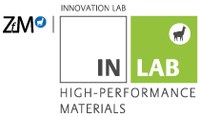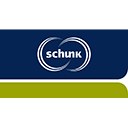Laser-induced optimization of the surface properties of sintered metal components
- Laser-induced challenges of the surface properties of sintered metal components
-

Partner: Schunk Sintermetalltechnik
The automotive industry faces a rapid transformation process: customers and legislators are increasingly demanding low-pollution or pollution-free cars. Electric vehicles are entering the market while at the same time the number of registrations of all cars worldwide is increasing. In 2030, around 20% of all new registrations are expected to be purely electric vehicles and 60% of all vehicles will have a hybrid drive. These developments in electromobility are placing ever higher demands on the durability and functionality of the increasingly complex individual parts in the drives, regardless of whether they are electric or hybrid.
The shaping of metal powders and solidification by sintering as well as the subsequent refinement of the sintered parts offer convincing advantages over conventional processes. Sintered components have the highest dimensional accuracy, even with complex geometries. Materials choice and their compositions are extremely flexible and can be optimized and selected for different functionalities. The spectrum of raw materials ranges from conventional iron powder to heat-resistant, highly wear-resistant materials. In particular, metal alloys that cannot be produced by conventional melt processes, can be synthesized by sintering.
Intrinsic to the manufacturing process, sintered metal components are fully porous. This leads to a low overall weight , high robustness and hardness. One challenge is the rather rough surface after the manufacturing process compared to machining and the associated challenges, for example, with regard to the noise development in moving parts ("noise pollution due to pitting wear", interference noise due to friction), which are significantly more attenuated on smooth surfaces. However, the material properties can be optimized by local compactification using laser processing in order to achieve higher densities. Furthermore, the laser-based surface finishing offers a great potential also for the optimization of other surface properties.
In close cooperation with the partners, the project aim is clarify to what extent the surface hardness of sintered metals can be controlled and optimized by continuous-wave laser irradiation or pulsed laser irradiation. New multifunctional materials will be created by local laser treatments. Furthermore, using suitable protective or reactive gases in the process, oxidic or carbidic protective layers can be realized, which lead not only to optimized hardness but also better thermal conductivity and better thermal contact. A controlled local melting and remelting of the surfaces by controlling the irradiation dose will allow us to realize properties on the surface similar to those of solid metal compounds, while maintaining the weight advantage of the sintered metal compounds.
More informations: mail to Prof. Sangam Chatterjee; mail to Carsten Voget-Grote
- Index Innovationlab

